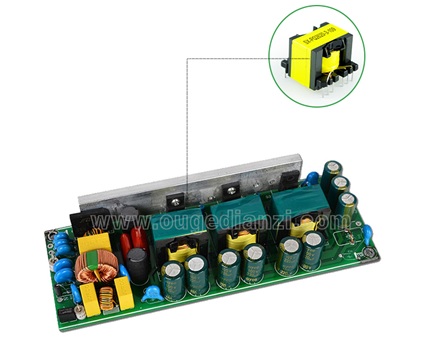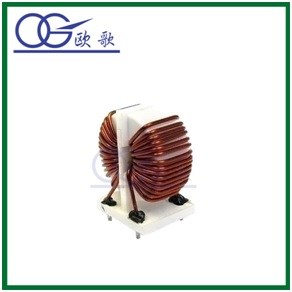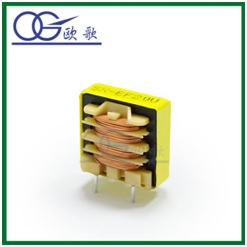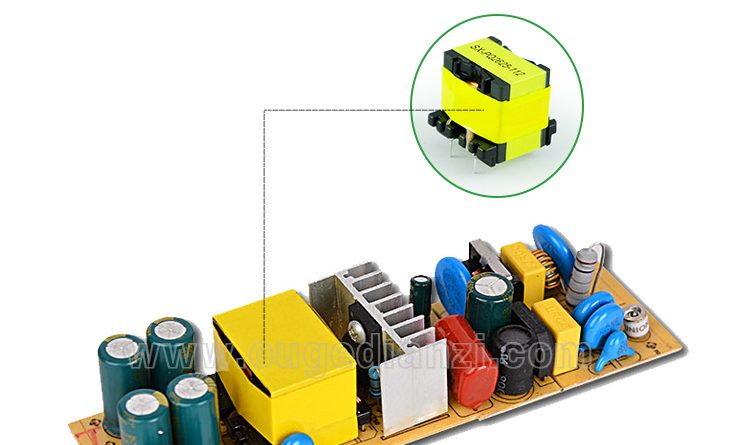What is the Difference between Coil and Winding in Transformer
—OUGE takes you to identify inductive elements in power transformer
For circuit beginners, the circuit board can be said to be a big maze, cause the dense parts are difficult to distinguish. Coil and winding are the easiest to confuse, and they are both vastly different in definition and use. Next, OUGE gives you an in-depth insight into the coil and winding in the transformer.

(OUGE Circuit Board)
- Coil
Coil usually refers to the winding of wire in a ring. The most common coil applications are motor, inductor, transformer and ring antenna. The coil in a circuit is an inductor. It also refers to the winding of conductors one by one, and the conductors are insulated from each other, and the insulated pipe can be hollow, which contains iron core or magnetic powder core. The inductance can be divided into fixed inductance and variable inductance.
Application
- Patch Coil
It is widely used in standard mode filter, multi-frequency transformer, an impedance transformer, balance, and unbalanced conversion transformer, USB line, LCD panel, low-voltage differential signal, remote control key of the automobile, etc.
- Fixed Inductance Coil
It includes: ring coil, choke coil, common mode coil, ferrite magnetic bead, power inductance, patch type, and pin type, which is widely used in telecommunication, computer, AC power supply and peripheral equipment.
- Closed Magnetic Circuit High Current Power Inductance
Ideal DC-DC conversion inductance is high power, high saturation inductance, small DC resistance, suitable for high current. The closed magnetic circuit high current power inductor usually is applied to the video electrical source supply, video electrical source supply, LCD TV, laptops, office automation equipment, mobile communication equipment, etc.

(OUGE Preeminent Inductor)
- Radio Frequency Inductance
It is widely used in mobile phone, VCO, TCXO circuit, GPS, wireless network, Bluetooth module,etc.

- Winding
Winding refers to a group of turns forming an electrical circuit corresponding to a voltage value marked by the transformer. The turns of each side winding are different, so the terminal voltage is also different, and the multi-winding transformer can supply power to several electrical equipment with different voltages.
The winding is the arrangement and connection of coils. Coil related concepts in winding include polar distance, pitch distance, etc.
Pole Distance: the range of each magnetic pole along the inner circle of the stator core. The cross section of the rotor core is a circle whose geometric angle is 360 degrees. From an electromagnetic point of view, a pair of N and S poles form a magnetic field period.
Pitch Distance: The number of slots crossed between two effective edges of a coil is called the pitch of the coil, expressed in Y. When the Y is less than τ, the winding is called short winding. When the Y is equal to τ, the winding is called integer distance winding. When the Y is large than τ, the winding is called long distance winding.
Single and Double Layer Winding:The single-layer winding only can be set one element in a slot and the double-layer winding can be set two elements in a slot.

(OUGE High-quality transformer)
Winding Constitution Principle
- Uniformity Principle
The number of slots in each polar region should be equal, and the number of slots occupied by each phase winding in each polar region should be equal, which also should be specified by polar distance.
- Symmetry Principle
The structure of three-phase winding is exactly the same, but they are staggered at 120 electrical angles in the circular space of the motor. If the slot spacing angle is alpha, the number of adjacent two-phase staggered slot is 120/ alpha.
- Coil vs. Winding
- Difference
Every coil requires a winding but not every winding is coiled. The coil is made of insulated wire wound in a certain shape, which may consist of one or more turns. A group of coils forming a unit is called winding, which means a winding is a combination of coils.
- The Function of the Coil
Choke Action: The self-induced electromotive force in a coil is always in opposition to changes in the current. It can be divided into high-frequency choke coil and low-frequency choke coil.
Frequency Selection: LC tuning circuit can be composed of inductor coil and capacitor in parallel. The natural oscillation frequency F0 of the circuit is equal to the frequency of the non-AC signal, so the inductive reactance and the capacitive reactance of the circuit are also equal, and the electromagnetic energy oscillates back and forth between the inductor and capacitor, which is the resonance phenomenon of LC circuit.
- The Function of the Winding
The winding is the circuit part of the transformer, made of electromagnetic wire winding. In recent years, the proportion of aluminum wire transformer production is increasing. General switching power supply operation process: AC frequency convert to DC- high frequency pulse- transformer- DC output. For more information, please visit: http://www.ougedianzi.com/

